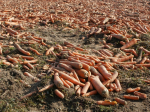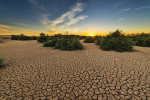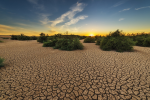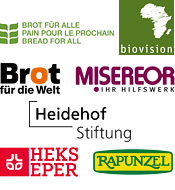News
27.08.2018
Food waste could rise by a third by 2030, report warns

Food loss and waste could increase by a third by the year 2030 unless urgent action is taken by governments, companies and consumers. This is the warning of a new report released by Boston Consulting Group (BCG). Currently, 1.6 billion tons of food worth about $1.2 trillion are being lost or wasted each year. According to a model developed by the consulting firm, food loss and waste could grow at an alarming rate, reaching 2.1 billion tons of produce worth $1.5 trillion by 2030. Significant spikes are expected in Asia, especially in industrializing countries with growing populations. “As wealth grows, people are demanding more food, more diverse food, food that is not grown locally. That’s going to increase food loss and waste,” co-author Shalini Unnikrishnan told The Guardian.
The report outlines that food loss or waste occurs at all steps in the value chain but is most pronounced at the beginning (production) and at the end (consumption). In developing countries, it happens mainly during production and transportation of food from farms, while in developed countries the problem is most prevalent in the consumption phase, among both retailers and consumers. “Roughly one-third of the food produced around the world goes to waste,” says Esben Hegnsholt, co-author of the publication. “This represents a challenge so massive that it was included in the United Nations’ Sustainable Development Goals. But while it is a daunting problem, there are steps that can be taken today, actions that draw on currently available technology and know-how, to dramatically slash food loss and waste across the value chain.”
The report presents five key drivers of the problem: lack of awareness among consumers and others, inadequate supply chain infrastructure, supply chain inefficiency, a lack of collaboration among groups across the food value chain, and poorly designed tax and regulatory policies. If those drivers are addressed, the dollar value of annual food loss and waste could be reduced by nearly $700 billion. Increasing awareness among all stakeholders alone could reduce the problem by $260 billion a year. The authors also state that regulations, industry standards, and tax policy have generally not been put in place or designed with an eye toward minimizing food loss and waste and encouraging efficient repurposing. They point out that disposing of food waste remains very cheap, and tax policies do not penalize companies and consumers for the waste they create and there are no incentives to cut waste. Regulations, taxes, and policies that encourage finding another valuable use for food and the recycling of it into the highest value products possible could reduce the problem by $110 billion per year.
BCG stress that real progress can only be achieved through commitment and coordinated action from consumers, governments, NGOs, farmers, and companies. The group says businesses can make an important contribution to cutting food waste: “While many stakeholders have a part to play in combating food loss and waste, the role of companies is perhaps the most critical,” according to Unnikrishnan. “Companies are involved in every aspect of the food supply chain, from production to consumption, and as a result, their decisions and actions have an outsized impact. At the same time, they have deep expertise, insight on potential solutions, and the money to make those solutions happen.” (ab)
23.08.2018
Sustainable development requires a transformation of food systems

We need to transform our food systems if we want to achieve the Sustainable Development Goals (SDGs) and combat climate change. This is the message of an article published in the journal “Agronomy for Sustainable Development” on August 9th. According to the authors, food systems “are at the nexus that links food security, nutrition, and human health, the viability of ecosystems, climate change, and social justice.” They are not just vital for achieving SDG2, which focuses on ending hunger and malnutrition and promoting sustainable agriculture – they concern the entire 2030 Agenda for Sustainable Development. “We need to implement a comprehensive transformation in food systems, centering on different paradigms and models from those of the 20th century,” said lead author Patrick Caron, a researcher with CIRAD and Chair of the UN’s High-Level Panel of Experts on Food Security and Nutrition. He stressed that the overriding priority for agriculture was for a long time to increase production, but this century has brought new challenges. We therefore need to move beyond food supply and focus on the long-term sustainability of food and farming.
The authors build on the work of the “Milano Group,” a group of experts convened by the UN Secretary General for an informal meeting in Italy on World Food Day 2015, and propose a four-pillar strategy for the transformation of food systems: First, drastic changes in consumption patterns are needed, with a shift towards healthy eating. “What must be produced in the future, both in terms of volume and quality and the social, health, and environmental footprints of production modes, will mainly depend on what is consumed, wasted, thrown away, or recycled,” the article reads. “Unhealthy diet is now recognized as a universal problem and the number one risk factor driving the world’s disease burden.” Second, the transformation involves a new vision for sustainable agricultural production and food value chains. This includes the promotion of inclusive, sustainable, and nutrition-sensitive forms of agricultural production, processing, distribution, and marketing. According to the authors, “sustainable agriculture can create decent jobs, support inclusive growth, improve livelihoods, and adapt to climate change”. They write that patterns of agricultural production and the measures of agriculture’s performance and effects must be reconsidered in ways that take account of the multiple functions expected from agriculture, including adaptation to and mitigation of climate change, biodiversity management, the provision of ecosystem-based services, people’s incomes, and just societies.
Mitigating climate change by means of sustainable farming practices is the third pillar. Agriculture and land use changes produce greenhouse gas emissions, but agricultural practices can also minimize emissions and store carbon in soils. “Provided that opportunistic behavior, in particular green-washing, is avoided, transformed agriculture and food systems can be important levers for effective climate action.” Fourth, the authors recommend a package of operations aimed at rejuvenating rural territories. Effective action at territorial level contributes to the food and nutrition security of rural and urban populations, to steady and shared economic growth, to decent jobs for young people, and to reducing root causes of frustration and conflict. “The 2030 Agenda for Sustainable Development relies on flourishing rural areas,” says Patrick Caron. “The interdependence of rural and urban areas must be acknowledged and used as the basis for a new rural-urban social contract. This would lay the foundations for a civilization that pays its rural areas and their inhabitants for the functions they fulfil and the public goods (commons) they provide for societies, the planet and economies.”
According to the Milano Group, these four parts together make up the food systems change that is required if the SDGs are to be achieved. But this transformation will not happen automatically: “The transformation will hinge on renewing food system governance, giving priority to human development and food and nutritional security, rational resource management, ecosystem health, and fairer development and consumption models. This means adopting new ways of designing, planning and managing programmes to support production, consumption, innovation and rural development.” The authors stress the need for context-specific, multi-dimensional, and integrated approaches. They refer to the IAASTD’s finding that “context-adapted” and “place-based” solutions should be favored over “one size fits all” prescriptions, even if the latter maintain the illusion to be easily taken to scale. (ab)
10.08.2018
Domino-effect could push Earth towards a ‘hothouse’ climate

Even if greenhouse gas emissions are reduced, there is a risk that global warming could trigger other processes which could push the Earth System irreversibly towards a “hothouse” climate, an international team of scientists has warned. The study, published in the journal Proceedings of the National Academy of Sciences, found that even if the targets of the Paris Agreement are met, this may not be enough to “park” the climate system at 1.5°C to 2°C above preindustrial levels. “A 2 °C warming could activate important tipping elements, raising the temperature further to activate other tipping elements in a domino-like cascade that could take the Earth System to even higher temperatures,” the authors write. This hothouse climate would in the long run see global average temperatures of 4-5°C higher than in pre-industrial times and sea levels rising 10 to 60 metres as compared to today. The scientists around lead author Will Steffen from the Australian National University and Johan Rockström from the Stockholm Resilience therefore call for an accelerated transition towards an emission-free world economy.
The authors analysed ten natural feedback processes, some of which are “tipping elements” that lead to abrupt change if a critical threshold is crossed. These feedbacks could turn from being a “friend” that stores carbon to a “foe” that emits it uncontrollably in a warmer world. The feedbacks include permafrost thaw, loss of methane hydrates from the ocean floor, weakening land and ocean carbon sinks, increasing bacterial respiration in the oceans, Amazon rainforest dieback, boreal forest dieback, reduction of northern hemisphere snow cover, loss of Arctic summer sea ice, and reduction of Antarctic sea ice and polar ice sheets. “These tipping elements can potentially act like a row of dominoes,” said Johan Rockström. “Once one is pushed over, it pushes Earth towards another. It may be very difficult or impossible to stop the whole row of dominoes from tumbling over. Places on Earth will become uninhabitable if “Hothouse Earth” becomes the reality,” he adds.
“The impacts of a Hothouse Earth pathway on human societies would likely be massive, sometimes abrupt, and undoubtedly disruptive,” the authors warn. It would also have serious consequences for food and farming. “Agricultural systems are particularly vulnerable, because they are spatially organized around the relatively stable Holocene patterns of terrestrial primary productivity, which depend on a well-established and predictable spatial distribution of temperature and precipitation in relation to the location of fertile soils as well as on a particular atmospheric CO2 concentration,” the authors write in the journal. “Current understanding suggests that, while a Stabilized Earth pathway could result in an approximate balance between increases and decreases in regional production as human systems adapt, a Hothouse Earth trajectory will likely exceed the limits of adaptation and result in a substantial overall decrease in agricultural production, increased prices, and even more disparity between wealthy and poor countries.”
“Avoiding this scenario requires a redirection of human actions from exploitation to stewardship of the Earth system,” said lead author Will Steffen. Maximising the chances of avoiding a “Hothouse Earth” requires not only a reduction of carbon dioxide and other greenhouse gas emissions but also the enhancement and creation of new biological carbon stores, for example, through improved forest, agricultural and soil management; biodiversity conservation; and technologies that remove carbon dioxide from the atmosphere and store it underground, the paper says. The authors also stress that these measures must be underpinned by fundamental societal changes that are needed to keep global warming below 2°C. (ab)
31.07.2018
Humanity has already exhausted Earth’s natural resources for 2018

August 1 marks Earth Overshoot Day this year – the day humanity has used up the resources nature can regenerate in a year, according to data from Global Footprint Network, an international research organisation. And the speed at which we consume these natural resources is increasing – August 1 is the earliest date ever recorded since the world first went into overshoot in the 1970s. To maintain this level of resource consumption, we would need the equivalent of 1.7 Earths. Earth Overshoot Day is calculated each year by contrasting the world’s demand on nature (ecological footprint), including demand for food, timber, fibres (cotton) and accommodation of infrastructure, with the planet’s ability to replenish resources and absorb waste, including carbon dioxide emissions. The date has moved up on the calendar from late September in 1997, showing that humanity is exhausting nature’s resource budget faster than ever. For the rest of the year, we will be living on resources borrowed from future generations.
The costs of this ecological overspending include deforestation, collapsing fisheries, fresh-water scarcity, soil erosion, biodiversity loss and the buildup of carbon dioxide in the atmosphere, leading to climate change and more severe droughts, wildfires, and hurricanes. These threats can force many people to migrate to cities or other countries. “As we mark Earth Overshoot Day, today may seem no different from yesterday – you still have the same food in your refrigerator,” said Mathis Wackernagel, CEO of Global Footprint Network. “But fires are raging in the Western United States. On the other side of the world, residents in Cape Town have had to slash water consumption in half since 2015. These are consequences of busting the ecological budget of our one and only planet.” According to the think tank, the estimated level of resources and ecosystem services required to support human activities today is 1.7 Earths. If everyone lived the way US citizens do, it would take 5 Earths to sustain global consumption. If the entire world followed Australia’s example, it would take 4.1 Earths. South Korea and Russia are using 3.5 and 3.3 Earths respectively, followed by Germany which is using nature 3 times faster than ecosystems can regenerate. India only needs the equivalent of 0.7 planets.
But the Global Footprint Network is also confident that the current trends can be reversed. They have identified four solution areas with the most potential to address ecological overshoot: cities, energy, food and population. If we reduced driving by 50% around the world and replaced one-third of car miles with public transportation and the rest by walking and biking, we could move Earth Overshoot Day back 12 days. Reducing the carbon component of humanity’s Ecological Footprint by 50% would get us from consuming the resources of 1.7 Earths down to 1.2 Earths. This corresponds to moving the date by 93 days, or about three months. Another important area is food: If everyone in the world cut food waste in half, reduced the footprint intensity of their diets by switching from industrial animal-based to local, vegetable-based diets and consumed world-average calories, the date could be moved back 38 days. “The past does not necessarily determine our future. Our current choices do. Through wise, forward-looking decisions, we can turn around natural resource consumption trends while improving the quality of life for all people,” Global Footprint Network says on its website. (ab)
26.07.2018
We can feed 9.7 billion by growing crops for humans, not animals

The current crop production is sufficient to feed the predicted 9.7 billion world population in 2050, but only if we make radical changes to our dietary choices, new research shows. The scientists from Lancaster University stress the need for fundamental changes to human diets, replacing most meat and dairy with plant-based alternatives, and a greater willingness to eat crops such as maize which are currently fed to animals. For the study, published in the journal “Elementa, Science of the Anthropocene”, the researchers combined data from the UN Food and Agriculture Organisation (FAO) with food nutrient data, and information on animal grazing and human nutritional needs. In the abstract of the study, they write that “the current production of crops is sufficient to provide enough food for the projected global population of 9.7 billion in 2050, although very significant changes to the socio-economic conditions of many (ensuring access to the global food supply) and radical changes to the dietary choices of most (replacing most meat and dairy with plant-based alternatives, and greater acceptance of human-edible crops currently fed to animals, especially maize, as directly-consumed human food) would be required.”
The scientists looked at calories and calculated what the effect would be if society in 2050 did not reduce waste and maintained per capita non-food uses at current levels while increasing meat, dairy and fish consumption in line with FAO projections to 730 kilocalories per person a day. “If society continues on a ‘business-as-usual’ dietary trajectory, a 119% increase in edible crops grown will be required by 2050”, said Professor Nick Hewitt, of the Lancaster Environment Centre. The researchers admit that meat and dairy, particularly if produced from grass, pasture and stover, may be of dietary importance to people who do not have access to diverse food types. However, they conclude that “Overall, industrialised meat and dairy production, which currently relies on feeding 34% of human-edible crop calories to animals globally, is highly inefficient in terms of the provision of human nutrition, since it reduces the energy, protein, iron and zinc supplies potentially available to humans from crops, and is incompatible with a sustainable global food system as currently conceived.” Professor Hewitt said their analysis “finds no nutritional case for feeding human-edible crops to animals, which reduces calorie and protein supplies.”
With regard to food waste, the study shows that reducing waste and excess consumption is also important, but quantitatively less significant. “The case for reducing food wastage, at all stages of the supply chain, and for reducing excess consumption above that required for healthy living, is self-evident. However, we show that, in the absence of increases in yield, both are quantitatively less important than reducing the amount of human-edible crops fed to animals,” the authors write. The analysis also shows that there is little scope for biofuel production. “Currently, 16% of crops available for eating are diverted to non-food uses, mainly biofuel. Increasing market pressures for biofuels could further stress the global food system,” said Professor Mike Berners-Lee, of Lancaster University’s Institute for Social Futures. He added that “there is currently widespread emphasis on increasing crop yields and reducing waste as the main mechanisms for ensuring global food security.” However, he stressed that the potential nutritional benefits of increased crop yields would be entirely lost if the additional crop production was diverted to biofuels and largely lost to feeding animals.
The authors highlight that the global food system has major impacts on the environment, through greenhouse gas emissions, water abstraction, soil, water and air pollution, land use change and loss of biodiversity, threatening food security and sustainability. “The challenge of sustainably producing sufficient food for the growing global population will not be solved by increases in production because there is a limit to the potential for efficiency gains, and many of these come with greater environmental costs, while increasing agricultural area by land use change almost invariably leads to losses of biodiversity,” they write. “Achieving global food security while reducing negative environmental impacts is one of the greatest challenges facing humanity,” said Professor Berners-Lee. But we can achieve this if we make radical changes to our dietary choices. (ab)
19.07.2018
Big meat and dairy companies are heating up the planet, report

The world’s largest meat and dairy companies could surpass the fossil fuel industry and become the biggest climate polluters within the next few decades, new research shows. The report, published by the non-profit organisations Institute for Agriculture and Trade Policy (IATP) and GRAIN, examines the 35 leading companies and found that most are not reporting their greenhouse gas emissions data and few have set targets that could reduce their overall climate footprint. Instead they are pursuing growth strategies that would actually increase their emissions, undermining international efforts to tackle climate change. The research shows that the five largest meat and dairy corporations combined (JBS, Tyson, Cargill, Dairy Farmers of America and Fonterra) are already responsible for annual greenhouse gas emissions of an estimated 578.3 Mt – more than major oil companies such as ExxonMobil (577 Mt), Shell (508 Mt) or BP (448 Mt). The combined emissions of the top 20 meat and dairy companies (933 Mt) even surpass the emissions from entire nations, such as Germany (902 Mt), Canada (722 Mt), Australia (533 Mt) or the UK (507 Mt).
According to GRAIN and IATP, most of the top 35 meat and dairy companies either fail to report emissions entirely, or exclude their supply chain emissions, which account for 80-90% of total emissions. Only four companies – NH Foods (Japan), Nestlé (Switzerland), FrieslandCampina (the Netherlands) and Danone (France) – provide complete, credible emissions estimates. The authors of the study complain that less than half of the top 35 meat and dairy giants have announced any type of emissions reduction targets. Out of these, only six include supply chain emissions. And even despite public commitments, most companies are driving overconsumption by ramping up production and exports. Tyson, for example, expects annual growth of 3–4% from beef and poultry sales, while Marfrig targeted 7.5–9.5% annual growth for 2015-2018. “There’s no other choice. Meat and dairy production in the countries where the top 35 companies dominate must be significantly reduced,” said Devlin Kuyek of GRAIN. “These corporations are pushing for trade agreements that will increase exports and emissions, and they are undermining real climate solutions like agroecology that benefit farmers, workers and consumers.”
If the growth of the global meat and dairy industry continues as projected, the livestock sector as a whole could consume 80% of the planet’s annual greenhouse gas budget by 2050. GRAIN and IATP decry that meat and dairy giants receive indirect subsidies because the public is paying the bill for the air, water and land pollution they cause, as well as the public health impacts from antibiotics overuse and biodiversity loss. “There is no such thing as ‘cheap meat,” said Shefali Sharma of IATP. “It’s time we realized over-consumption is directly linked to the subsidies we provide the industry to continue deforesting, depleting our natural resources and creating a major public health hazard. This report shows what a key role they play in creating climate change as well.” The organisations recommend that taxpayer funds should instead be channelled toward creating an agroecological transition of our food system in which farmers can supply everyone with moderate amounts of high-quality meat and dairy in a way that respects people, animals and the planet. “To do so, we must break the power of the big meat and dairy conglomerates and hold them to account for their supersized climate footprint,” the report concludes. (ab)
16.07.2018
Cost of food imports a growing burden for poorest countries

Food imports are placing an increasing burden on the world’s poorest countries, according to a new report released by the UN Food and Agriculture Organisation (FAO) on July 10th. The “Food Outlook” finds that food imports assume a large and growing share of foreign exchange earnings for many Low-Income Food Deficit Countries. The world food import bill has roughly tripled since 2000, reaching $1.43 trillion in 2017. However for those countries which are the most vulnerable to food shortages the figure has increased fivefold. The report looks at trends and the composition (animal proteins, fruits and vegetables, cereals, beverages, oilseeds and coffee, tea and spices) of food import bills since the turn of the millennium. The authors write that food imports have risen at an annual global average rate of 8% since 2000, but the rates have been in the double-digits for the vast majority of the poorest countries. The world’s least-developed countries (LDCs) now spend 28% of all merchandise export earnings on food imports, nearly double the share of 2005. Developed countries, which also have a larger GDP per capita, only spend an average of 10% of their export earnings on food imports.
The Food Outlook also found that the share of cereals compared to higher-value foods in the import basket has not declined in poorer countries, while it has declined considerably in wealthier ones. The authors point to the problem that poorer countries may be paying more and more for less food. “Due to the fact that virtually all international transactions are priced in US dollars, importing can also be encumbered by adverse movements in domestic currencies vis-a-vis the US dollar,” the report reads. “A further negative development is that exchange rates of numerous countries have in general been falling in real terms against the US dollar, bringing about diminishing purchasing power, and again, at a higher intensity than in developed countries. This shows a trend that has “been deteriorating over time, portending an increasing challenge, especially for the poorest countries, to meet their basic food needs from international markets,” said Adam Prakash, a FAO economist and author of the study. (ab)
04.07.2018
Global food prices to remain low over the next decade, OECD-FAO report

Global food prices are expected to remain low for the coming decade as the rate of population growth is forecast to decline and per capita consumption of many commodities will level off. Poorer countries with rising populations and scarce natural resources will become increasingly dependent on imports for basic foodstuffs to feed their populations. These are the key messages of the OECD-FAO Agricultural Outlook 2018-2027, which provides ten-year projections for all major agricultural commodities, as well as for biofuels and fish. According to the Organization for Economic Cooperation and Development (OECD) and the UN Food and Agriculture Organization (FAO), a decade after the food price spikes of 2007-8, conditions on world agricultural markets are very different today. “Production has grown strongly across commodities, and in 2017 reached record levels for most cereals, types of meat, dairy products, and fish, while cereal stock levels climbed to all-time highs,” the executive summary says. However, demand has started to grow slower than in the past. The authors attribute this to weakening demand in major emerging economies, stagnating per capita consumption of staple foods and slowing demand growth for meat products. Another reason is that the rate of global population growth will decline gradually. With strong supplies, ample stocks and lower demand growth, commodity prices are expected to decline in the years to come.
The Outlook finds that global agricultural and fish production is projected to grow by around 20% over the coming decade, but with considerable variation across regions. Strong growth is expected in developing regions with rapidly growing populations. In developed countries, especially in Western Europe, production increases will be much lower. With slower consumption and production growth, agricultural and fish trade are projected to grow at about half the rate of the previous decade. FAO and OECD expect that net exports will increase from land-abundant countries and regions, notably the Americas. Countries with high population growth, in particular in the Middle East and North Africa, Sub-Saharan Africa and in Asia, will see rising net imports. “Many poorer countries with rising populations and limited land resources will be increasingly dependent on food imports to feed their people,” said OECD Secretary-General Angel Gurría.
With regard to meat products, the outlook projects that demand will grow at a slower rate than before. “Some low-income regions which currently have low per capita consumption levels of meat, such as Sub-Saharan Africa, are not expected to increase these levels significantly due to a lack of sufficient income growth,” the report finds. “Some emerging economies, in particular China, have already transitioned to relatively high levels of per capita meat consumption. In India, where income growth is stronger, dietary preferences translate rising incomes into an increased per capita demand for dairy as preferred animal protein, rather than meat.” Demand for cereals and vegetable oil for the production of biofuels is expected to grow much more modestly than in the last decade, when biofuels expansion led to more than 120 million tonnes of additional cereal demand, predominantly maize. With existing policies in developed countries unlikely to support biofuels expansion, most demand growth will come from emerging countries which have introduced blending mandates.
The report also addresses health concerns since the per capita intake of sugar and vegetable oil is expected to increase in the developing world. Urbanisation is leading to higher demand for processed and convenience foods. “Changes in levels of food consumption and the composition of diets imply that the “triple burden” of undernourishment, over-nourishment and malnutrition will persist in developing countries,” the report warns. It also recommends that countries re-orient policies towards sustainable farming systems: “The Green Revolution of the last century largely increased the world’s capacity to feed itself but now we need a sustainability revolution,” said FAO Director-General José Graziano da Silva. “This includes tackling high-input and resource-intensive farming systems that impose a high cost to the environment. Soil, forests, water, air quality and biodiversity continue to degrade. We need to adopt sustainable and productive food systems that offer healthy and nutritious food, while also preserving the environment and biodiversity.” (ab)
27.06.2018
Land area half the size of the EU is degraded every year, report

Population growth and changes in consumption patterns put unprecedented pressure on the planet’s natural resources. Land degradation has become a serious problem: Globally, a total area half of the size of the European Union is degraded annually, with Africa and Asia being the most affected regions. This is the sad message of the latest edition of the World Atlas of Desertification, published by the European Commission’s Joint Research Centre (JRC) on 21 June. The Atlas was created using new data processing methods employed by EU scientists, thousands of high-performance computers and 1.8 petabytes of satellite data. “Over the past twenty years, since the publication of the last edition of the World Atlas of Desertification, pressures on land and soil have increased dramatically,” warns Tibor Navracsics, EU Commissioner for Education, Culture, Youth and Sport. “To preserve our planet for future generations, we urgently need to change the way we treat these precious resources.”
The Atlas is intended as a tool for decision makers to better understand land degradation, its causes and potential remedies to tackle desertification and restore degraded land. It provides many examples of how human activity drives species to extinction, threatens food security, intensifies climate change and leads to people being displaced from their homes. The report contains a large collection of facts, forecasts and global datasets about land degradation: According to the Atlas, over 75% of the Earth’s land area is already degraded, and over 90% could become degraded by 2050. Land degradation and climate change are estimated to lead to a reduction of global crop yields by about 10% by 2050. Most of this will occur in India, China and sub-Saharan Africa, where land degradation could even halve crop production. It is projected that by 2050, up to 700 million people will have been displaced due to issues linked to scarce land resources. This figure could reach 10 billion by the end of this century.
The report also presents solutions to the problem of land degradation. The authors stress that further agricultural expansion, one of the main causes of land degradation, could be limited by increasing yields on existing farmland, shifting to plant-based diets, consuming animal proteins from sustainable sources and reducing food loss and waste. The Atlas presents many examples of successful sustainable land management practices around the globe and their environmental, ecological and societal benefits. One of them is the widespread implementation of small-scale water-harvesting systems that make better use of precious rainfall in drylands. Micro-basins, as those near Mount Kenya presented in the report, are an effective way of maximizing rainwater retention. In order to avoid the loss of soil moisture through evaporation, the soil is covered. Leaving crop residues and weeds (applied as a mulch) between crop rotations is a good practice to keep permanent soil cover and reduce moisture loss. Another good land management practice cited in the report is the large-scale terracing of land in the Loess plateau of China which has improved land productivity and the livelihoods of millions of land users. This measure not only helped to increase food production for a growing population, it also reduced catastrophic floods and the sedimentation of large dams.
“Maintaining or improving the productive capacity of land requires a move towards land degradation neutrality. This is a matter of preserving or enhancing the ability of land resources to support ecosystem functions and services,” concludes the report. “Sustainable management of soil, water and biodiversity can help close yield gaps, increase the resilience of land and thus support the people who depend on it for their livelihoods. This will come at a cost, but the cost of action or prevention is always lower than the cost of inaction,” the authors stress. (ab)
18.06.2018
Consumers can contribute to halt land degradation, UNCCD says

Land degradation is undermining the well-being of 3.2 billion people worldwide but we can all contribute to avoid this threat by supporting sustainable land management. This is the message of the UN Convention to Combat Desertification (UNCCD) on the occasion of this year’s World Day to Combat Desertification celebrated on June 17. “Everything we produce and consume has a land footprint. A bicycle requires 3.4 square meters of land. Ten square meters of land are used to produce a laptop. Producing one kilogram of beef takes 22 square meters,” said Monique Barbut, UNCCD Executive Secretary. She stressed that few people think about this land footprint “because the losses are not visible – or at least not accounted for – in the products we consume.”
People are often using land as if it were a limitless resource, the UN agency said. This negligence threatens food and water supply, biodiversity and even human security itself. Short-sighted economic gains such as land grabbing, unplanned urban sprawl, unsustainable agriculture and over-consumption lead to unsustainable land use, which eventually causes degradation and loss of critical ecosystem services. As a result, consumption of the Earth’s natural reserves has doubled in the last 30 years and a third of the planet’s land is already severely degraded. This is causing serious problems for the 1.3 billion people, mostly in developing countries, who depend on this degrading land for their livelihoods – jobs, incomes, food, water, energy, and medicines.
But the UNCCD highlighted that changes in behaviour and the adoption of more efficient planning and practices can guarantee that sufficient land resources are available long-term to meet our ambitions for and to provide sustainable livelihoods. “Every one of us has a role to play,” said Barbut in her message for the day. “Farmers can invest in smart agriculture that leads to higher yields despite a reduction in inputs like pesticides. Consumers can spend their money on organic and fairly traded products to avoid land degradation. There are many more ways to invest in land wisely,” she stressed. “Imagine, what would happen if the world’s over 7 billion consumers committed, every year, to just one lifestyle change that will support the provision of goods from sustainably managed land.” She called on consumers worldwide to make choices that reward land users whose practices protect the land from degradation. “When you choose what to eat, what to wear or what to drive, think about how your choice impacts the land – for better or for worse.”
Land degradation also plays an important role in the 2030 Agenda for Sustainable Development. Sustainable Development Goal (SDG) 15 on Life on Land calls for a resolve to halt and reverse land degradation, with a target to combat desertification, restore degraded land and soil, including land affected by desertification, drought and floods, and strive to achieve a land degradation-neutral world by 2030. The UNCCD stressed that our small decisions every day can transform the world. “In 2030, when the international community evaluates its achievement of the Sustainable Development Goals, you can point to positive changes that you have contributed in favor of present and future generations.” (ab)

